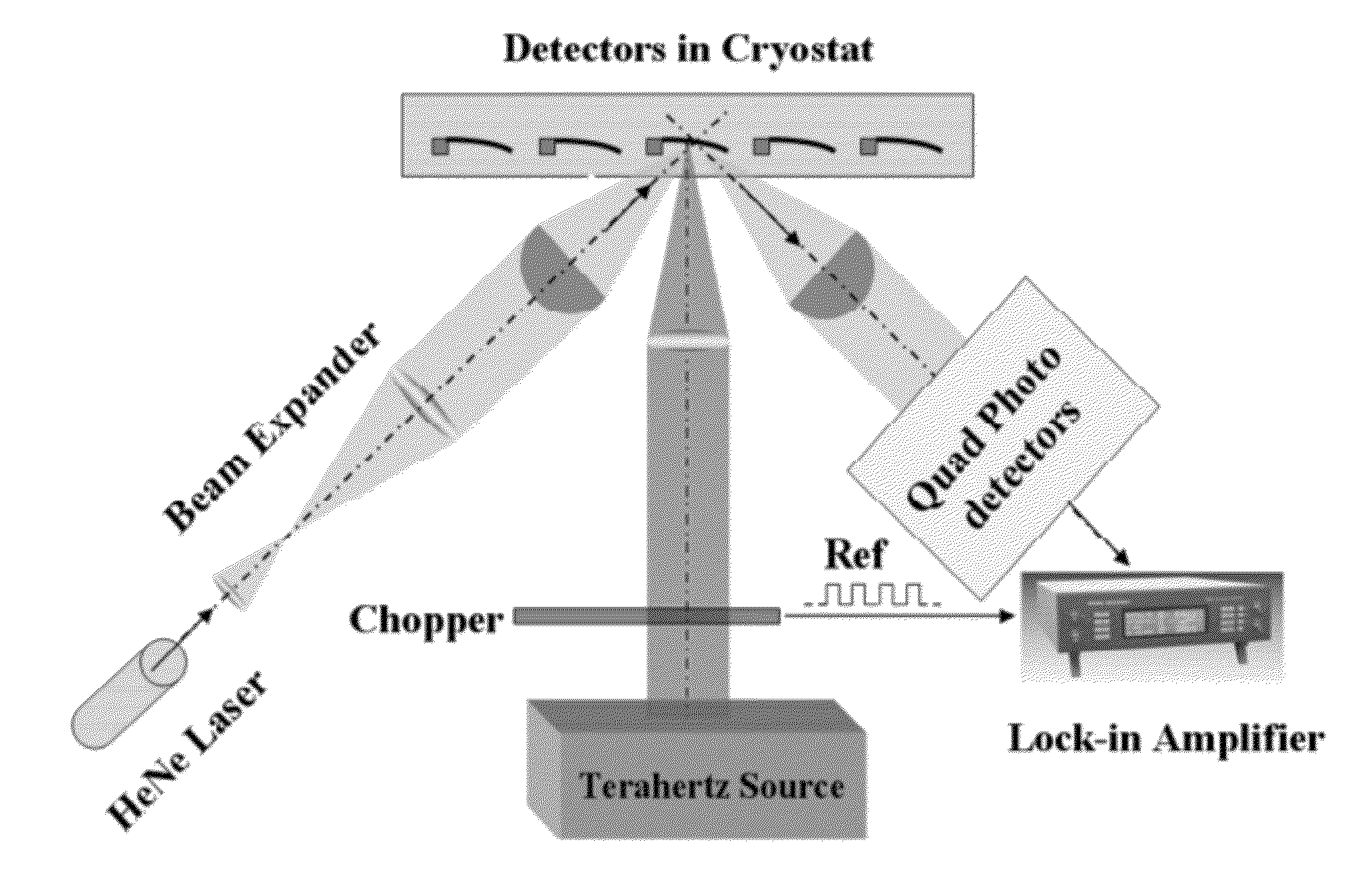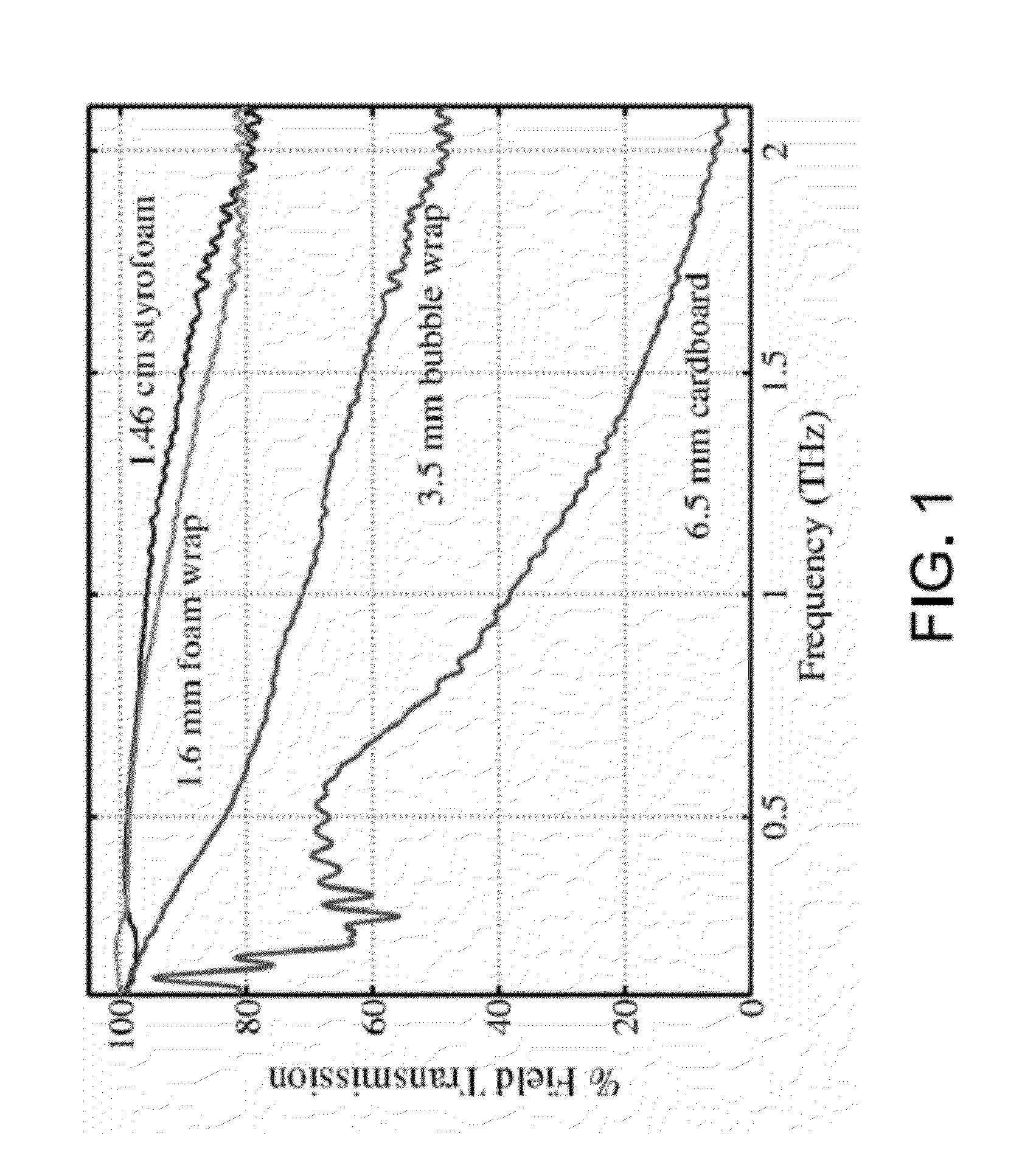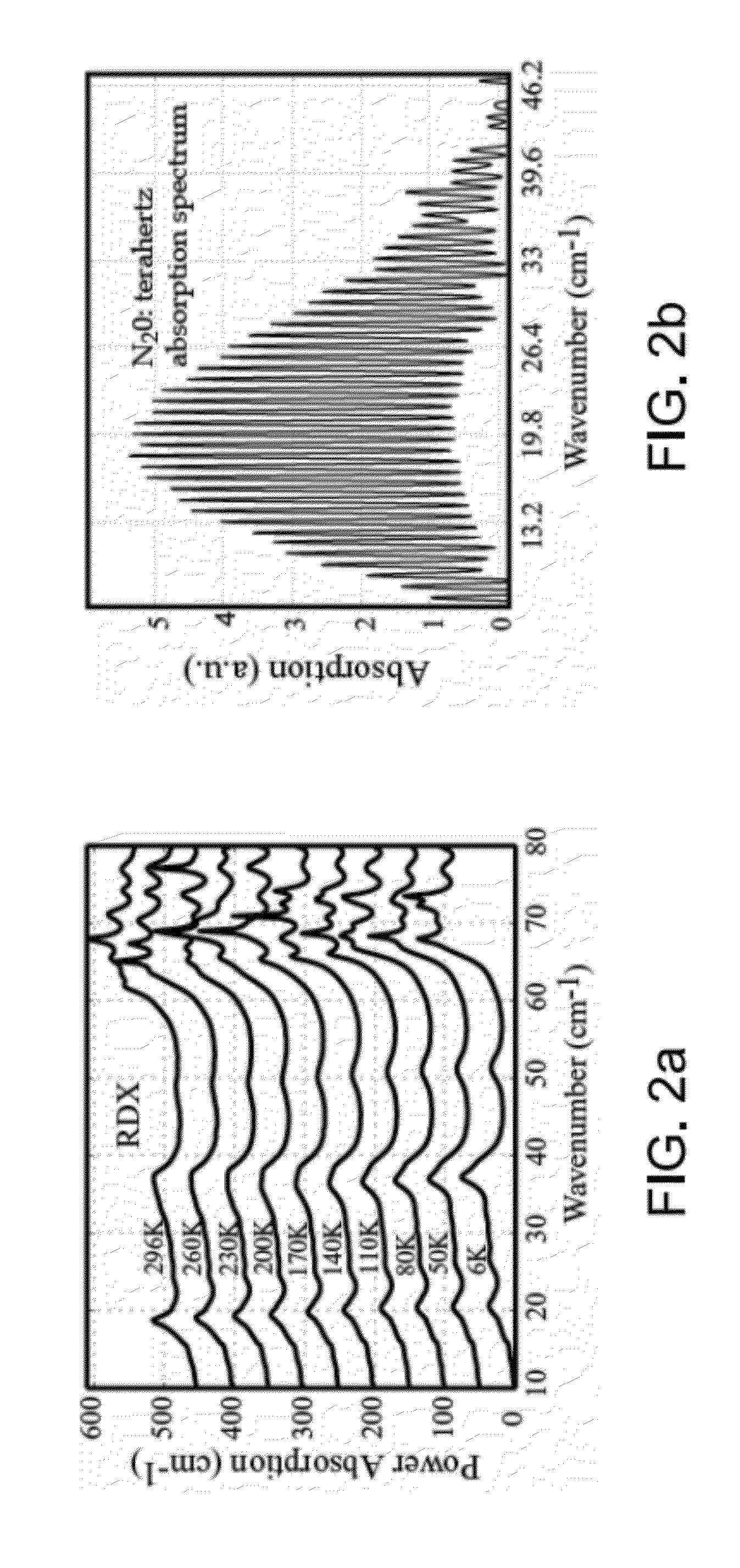Thermal Imager Using Metamaterials
a metamaterial and detector array technology, applied in the field of infrared and microwave detector arrays, can solve problems such as unsatisfactory many real-world applications, and achieve the effect of convenient fabrication
- Summary
- Abstract
- Description
- Claims
- Application Information
AI Technical Summary
Benefits of technology
Problems solved by technology
Method used
Image
Examples
first embodiment
[0014]In the invention, there is provided an apparatus for detecting terahertz radiation at room temperature. The apparatus includes a substrate and a detection structure. The detection structure include (a) an optically reflective surface, and (b) a radiation absorption pad having formed thereon a split-ring resonator. The SRR has a characteristic dimension and an electrical resonance frequency that corresponds to a wavelength of the terahertz radiation that is greater than the characteristic dimension. The detection structure is coupled to the substrate by a flexible cantilever having two types of folded legs. First, the cantilever has a plurality of actuation legs that flex when heated, and are formed from two materials having substantially different coefficients of thermal expansion. Second, the cantilever has a plurality of thermal isolation legs having substantially lower thermal conductivity than the actuation legs.
[0015]The substrate may be a silicon (Si) wafer or a gallium ...
second embodiment
[0016]In the invention, there is provided a method of imaging an object. The method includes illuminating the object with terahertz radiation having a wavelength and absorbing, in a detector, a portion of the terahertz radiation that has interacted with the object. The detector includes a plurality of pixels that move when heated, each pixel having formed thereon a split-ring resonator. At least one of the split-ring resonators has a characteristic dimension that is less than the wavelength of the terahertz radiation and an electrical resonance frequency that corresponds to the wavelength of the terahertz radiation. Absorption of the portion of radiation causes the at least one split-ring resonator to generate sufficient heat to cause movement of the pixel on which it is formed.
[0017]The wavelength of the terahertz radiation detected may be between 30 μm and 3000 μm. The characteristic dimension of the split-ring resonator is between 5 μm and 500 μm. The detector may also include a ...
PUM
 Login to View More
Login to View More Abstract
Description
Claims
Application Information
 Login to View More
Login to View More - R&D
- Intellectual Property
- Life Sciences
- Materials
- Tech Scout
- Unparalleled Data Quality
- Higher Quality Content
- 60% Fewer Hallucinations
Browse by: Latest US Patents, China's latest patents, Technical Efficacy Thesaurus, Application Domain, Technology Topic, Popular Technical Reports.
© 2025 PatSnap. All rights reserved.Legal|Privacy policy|Modern Slavery Act Transparency Statement|Sitemap|About US| Contact US: help@patsnap.com



